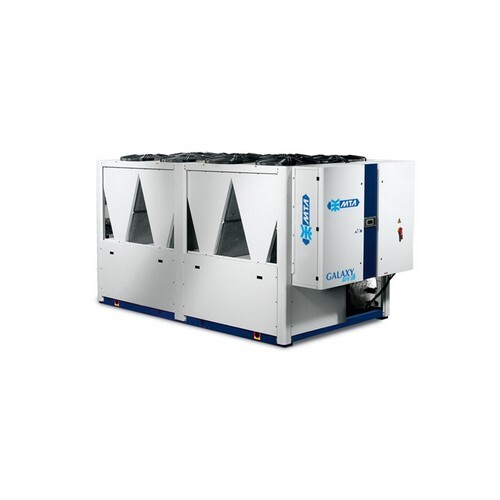Liquid coolers
Liquid coolers: characteristics and functionality
Liquid coolers, commonly known as chillers, are fundamental devices in the industrial and commercial cooling sector. They play a crucial role in maintaining stable and appropriate temperatures in various production processes, ensuring efficiency and safety.
This article will provide an in-depth look at the operation, applications, and benefits of liquid coolers, offering a comprehensive overview for anyone interested in this technology.
How liquid coolers work
Liquid coolers operate through either a vapor compression cycle or an absorption cycle. In the vapor compression cycle, a refrigerant absorbs heat from the liquid to be cooled and then releases it into the external environment.
This process consists of four main phases:
- Evaporation
- Compression
- Condensation
- Expansion
The refrigerant evaporates by absorbing heat, is compressed to increase its temperature, releases heat during condensation, and expands to lower the temperature again, completing the cycle.
Types of liquid coolers
There are several types of liquid coolers, each designed for specific applications:
- Air-cooled chillers: These systems use ambient air to dissipate heat. They are commonly used in environments where water is scarce or where water costs are high.
- Water-cooled chillers: These use water as a cooling medium, providing higher energy efficiency compared to air-cooled chillers. However, they require constant access to a water source and a water treatment system to prevent corrosion and scale buildup.
- Evaporative chillers: These combine the use of air and water to cool the liquid, leveraging the evaporation process to enhance cooling efficiency.
Applications of liquid coolers
Liquid coolers are widely used across various industries, including:
- Manufacturing industry: Used to cool machinery and production processes, improving efficiency and reducing the risk of overheating.
- Food and beverage sector: Maintain the required temperatures for food and beverage storage and processing, ensuring quality and safety.
- Hospitals and healthcare facilities: Crucial for maintaining the necessary environmental conditions for storing pharmaceuticals and operating medical equipment.
- Data centers: Essential for maintaining optimal server temperatures, preventing downtime and data loss.

















